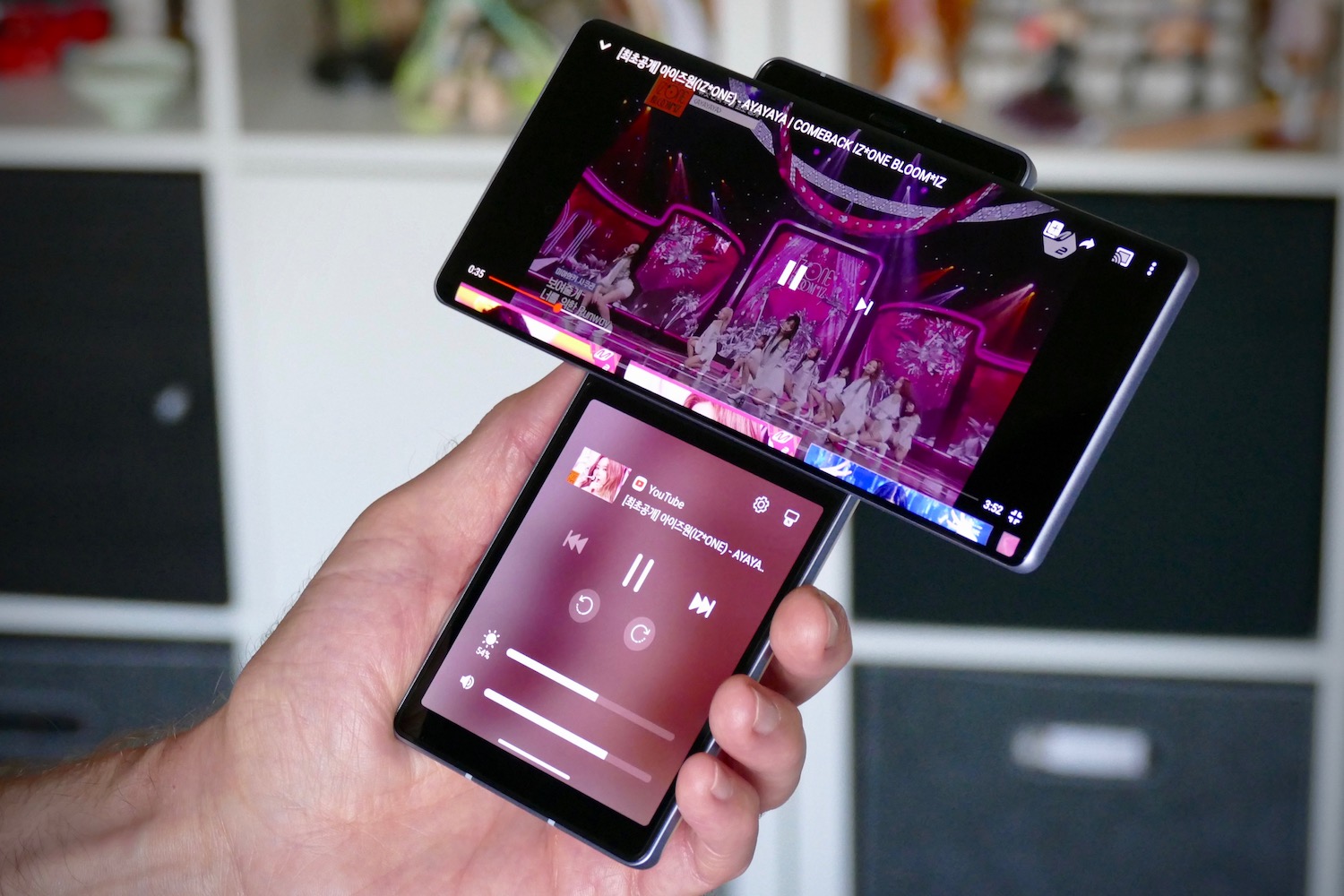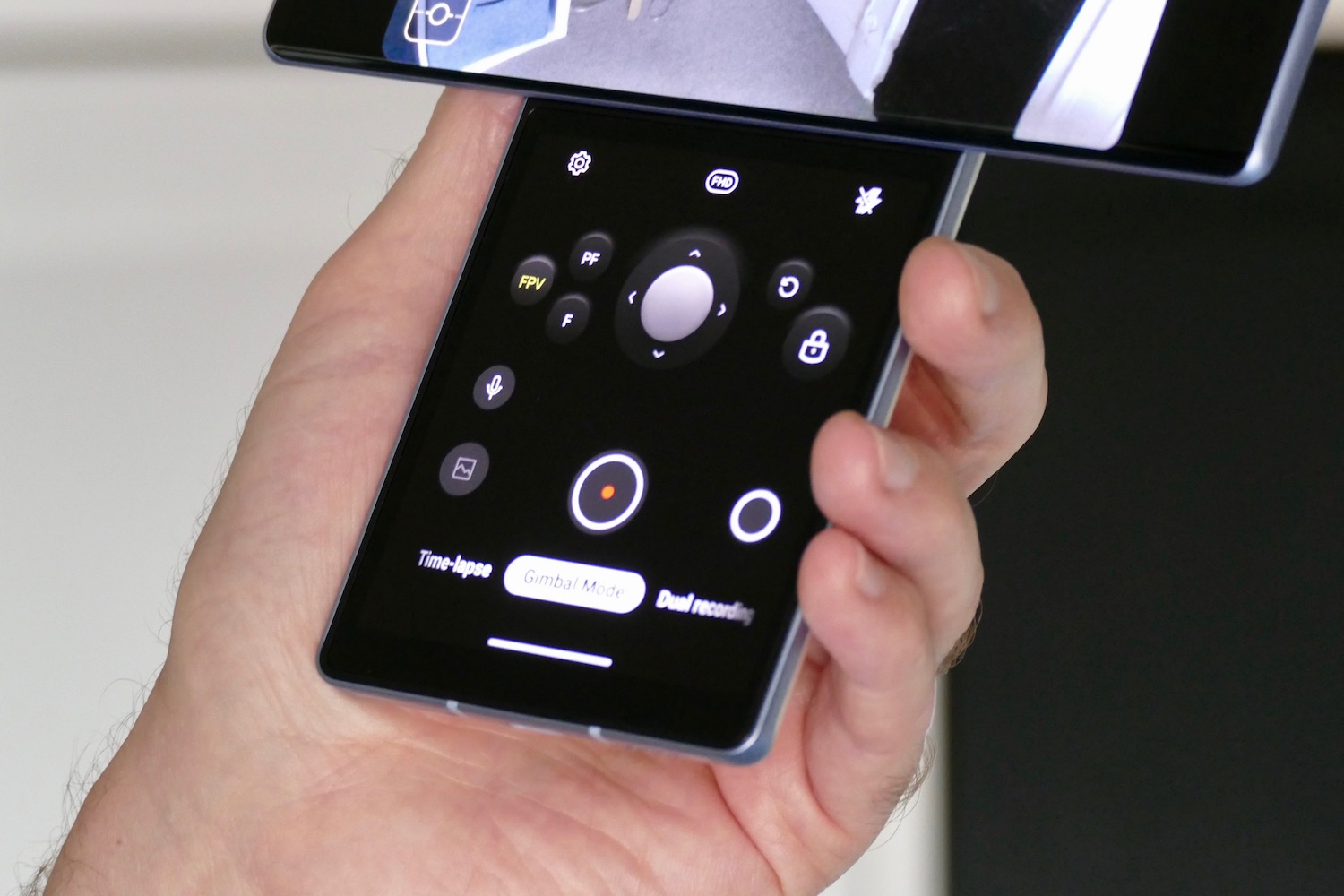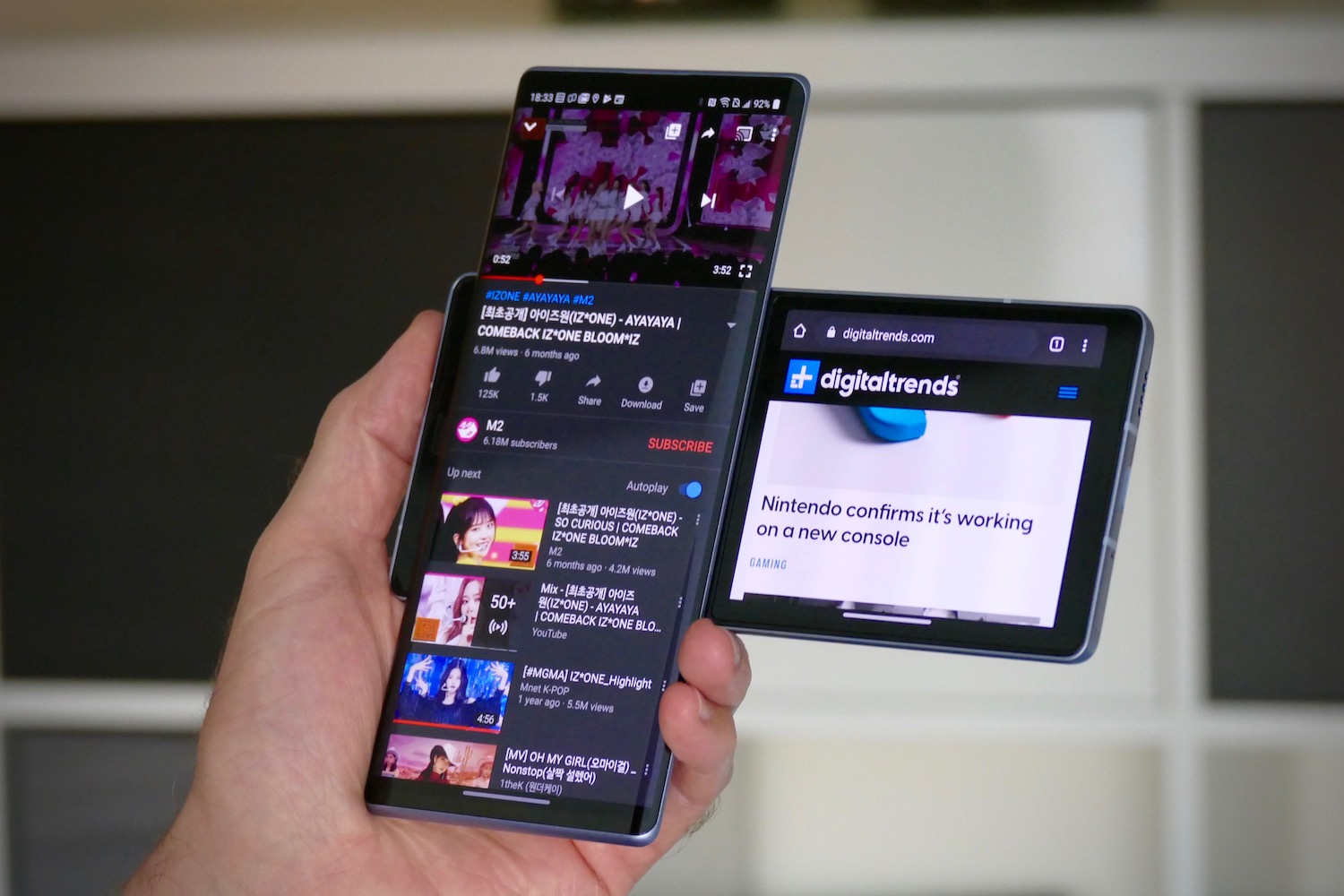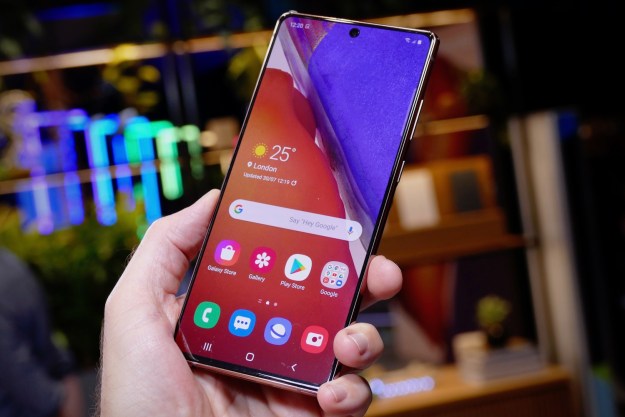In 2006 Nokia released the N95, a phone that has gone on to become an icon in the mobile world. Loved for its technical prowess at the time, it was also notable for the screen sliding up to reveal the alphanumeric keypad below it, or down to reveal a set of media controls. If you’re struggling to understand what the LG Wing is all about, think of it as 2020’s N95, as the crazy swiveling screen provides a more ergonomic experience when you’re doing the things you enjoy.
Think I’m as mad as the phone’s design? I’ve had the LG Wing for a very short time, so what you’re going to read are my very early impressions – but I really do see something special here.
Design
The swiveling screen is pretty damn slick. I absolutely guarantee you’ll chuckle with nerdy glee the first time you nudge the screen to the left and it springs round, and the neat dampening slows it down as it reaches its 90-degree angle resting spot. In the same way the first few times opening the Galaxy Fold was a unique experience, so is flicking the screen round on the LG Wing.
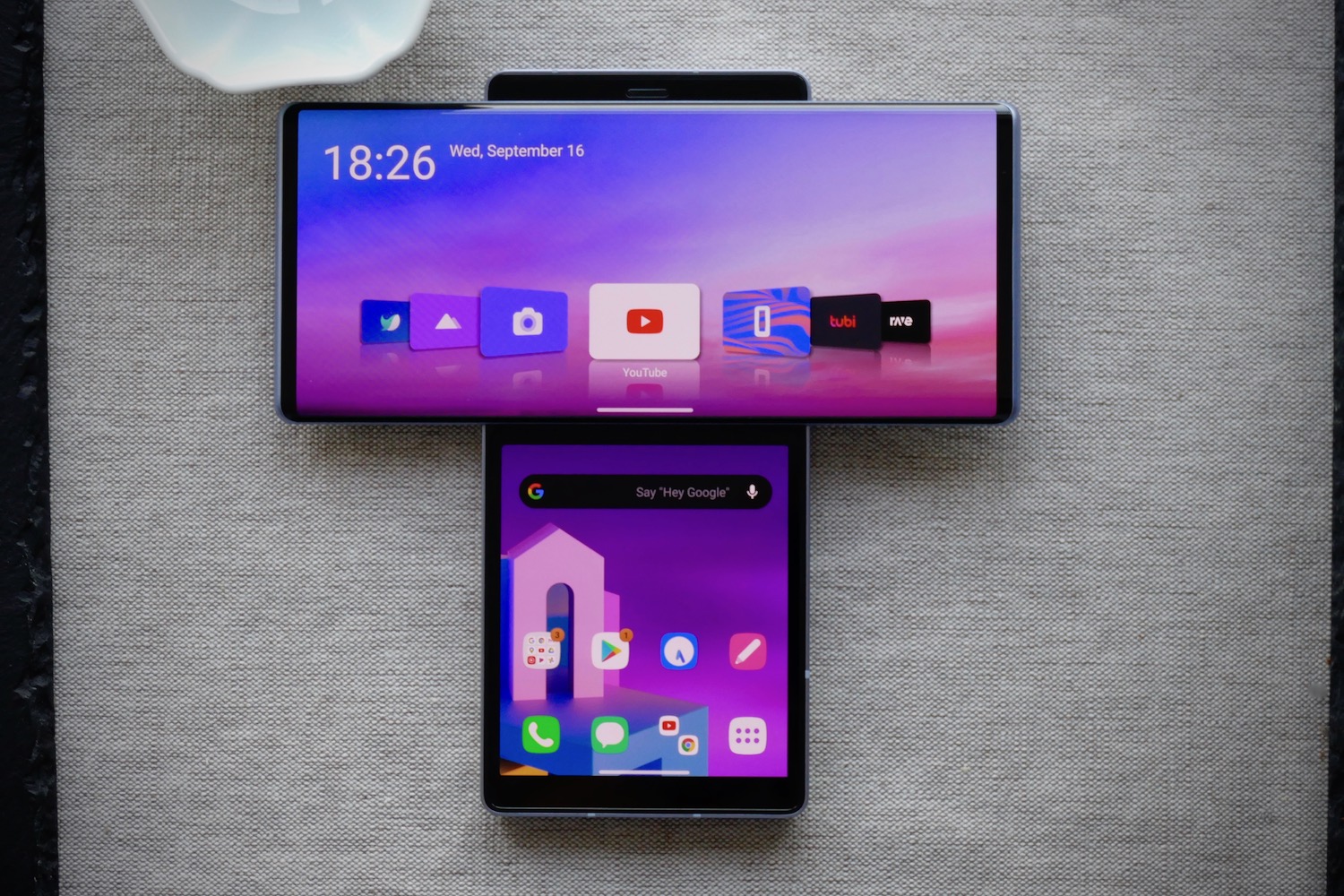
With the notch-less, hole-less 6.8-inch P-OLED screen now in landscape orientation, a second 3.9-inch OLED screen appears below it while you still grasp the phone’s body in portrait orientation. Despite this being a pre-production phone, the software animates attractively. A square Android home screen swoops in on the smaller display, and a custom menu populated with apps that take advantage of the unusual layout slides in on the top screen.
Utterly, completely, totally bonkers.
The @LGUS #LGWing is a swivel-screened loon, and I rather like it. pic.twitter.com/UskrfkkEjB
— Andy Boxall (@AndyBoxall) September 17, 2020
Back in 2006 with the N95, you needed to use a physical keypad, but tech was moving on enough to provide a larger screen, so the slider design was the ideal way to avoid making a massive phone and still give us the prime features we needed. In 2020 we watch video, take photos, and play games in landscape orientation, but we interact with keyboards and controls most naturally when the phone is in portrait orientation. The LG Wing’s swivel screen is an updated modern take on the thinking behind the N95’s slider.
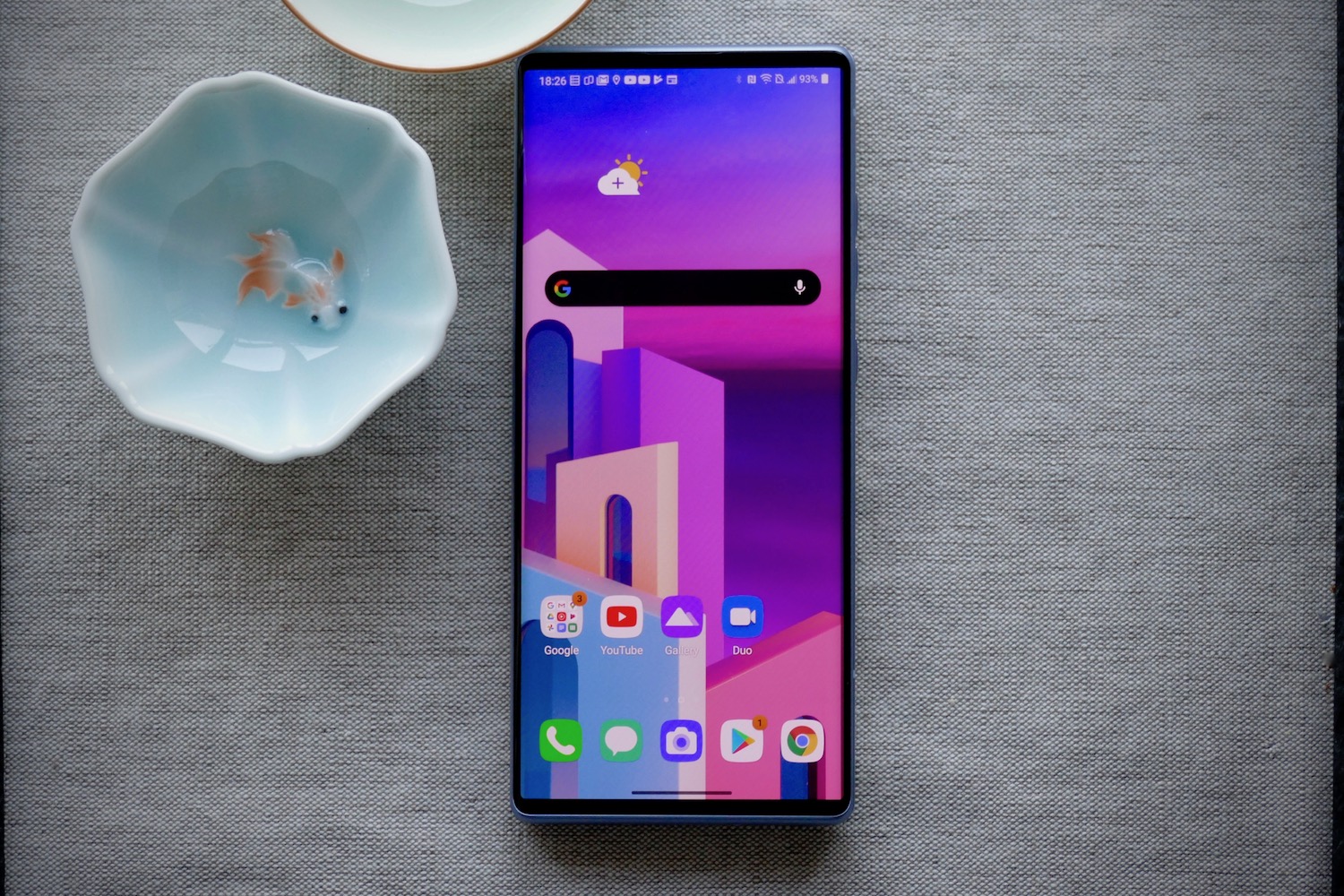
With the screen swiveled round there is understandably a little movement in it if you jiggle it from side to side, but it feels solid and secure. The motion is satisfyingly precise when opening, with the springiness where the screen takes over the movement being perfectly judged. It snaps closed without effort. I wouldn’t want to knock it when it’s open though, for fear of breaking the screen off. That said, it’s good to see the motion has been tested to 200,000 movements, which will last you years, and the phone complies with the MIL-STD-810G toughness standard, plus it even has basic IP54 water and dust resistance.
Leaving aside the screen, I love the Illusion Sky color seen here, which has an oyster shell-like finish that flows between blue, silver, purple, and pink. The matte finish panel curves around the edge to meet the chassis, which then attaches to the main screen. This is a thick phone at 10.9mm — the Galaxy S20 Plus is 7.8mm for comparison — and a massive 260 grams in weight.
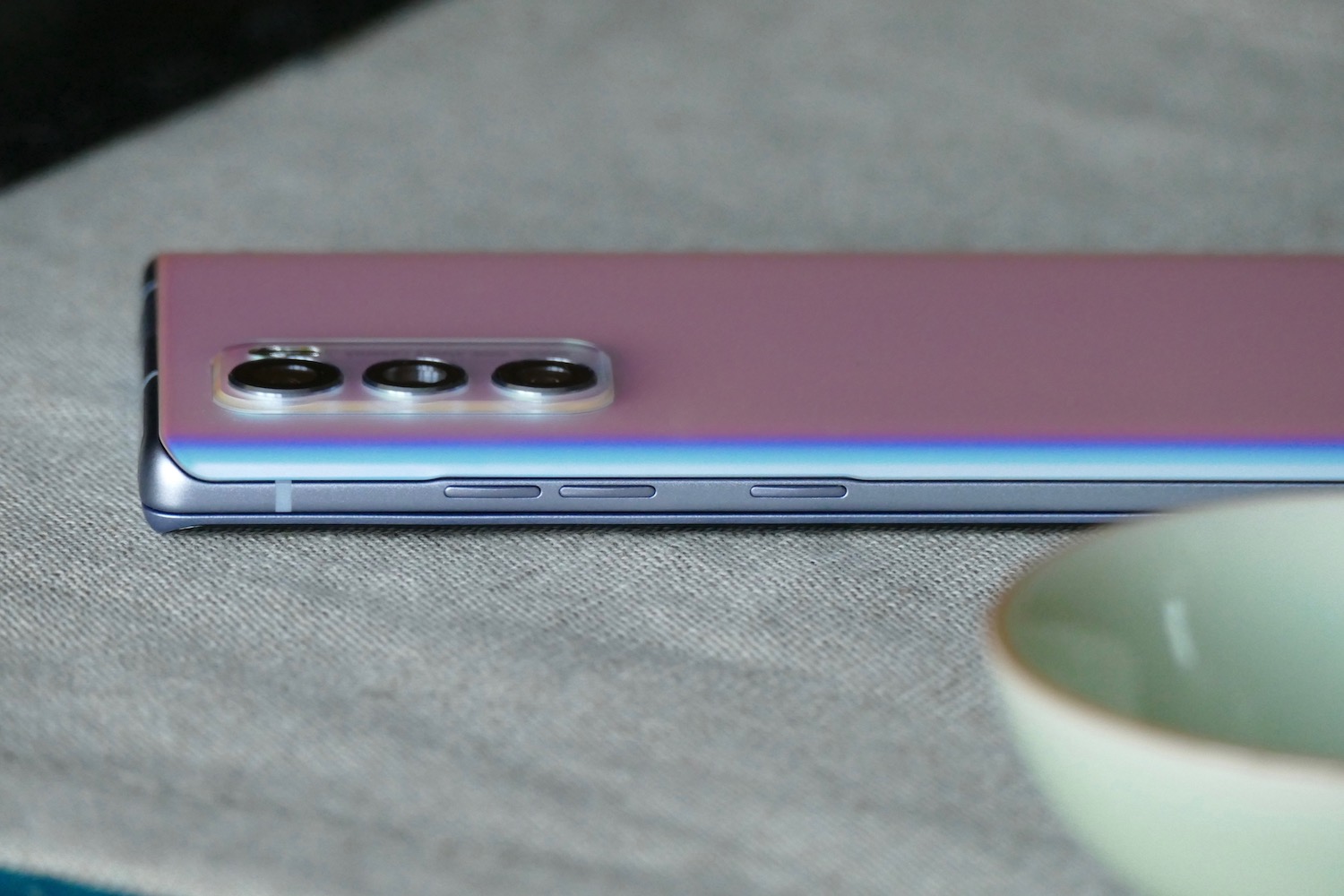
That’s more than the Asus ROG Phone 3, which in itself is hefty, but thankfully it’s not as heavy as the Samsung Galaxy Z Fold 2. The LG Wing’s weight is well distributed and it does hide this bulk quite well, but you’d best have a good belt on your trousers when this is in your pocket, because it’s definitely going to weigh them down. Ironically, you notice the weight most when you hold the phone in portrait and try to activate the in-display fingerprint sensor, which is set quite low on the screen.
Features and software
There’s still work to be done on the software to fully take advantage of the shifting screen orientation. For example, even though YouTube is shown as an app that works with the screen swiveled round, the on-screen controls refuse to disappear when a video is playing, and when you swap to the Whale browser to use the YouTube mobile site, it doesn’t play at a resolution higher than 360p. These are things that will likely be fixed in short order. Still, having the controls on the second screen is convenient, especially the volume control, and it’s very comfortable to hold the phone like this. You don’t need to be told this really, as you do it every day, just not while watching landscape video.
LG has worked with Rave to optimize its app. Popular during lockdown, Rave lets you watch video with your friends and chat in real time, making it ideal for the Wing’s screen layout. You can also hold the phone so the large screen is in portrait and the second screen sticks out the side, although not many apps seemed to support it in my brief test. Gameloft has apparently made some alterations to Asphalt 9: Legends for the LG Wing, but when I tried it the second screen didn’t do anything.
As mentioned, this is a pre-production phone, and the software is not final so things will change before release. There’s promise here, but as usual with these unusual designs, it takes effort from developers and manufacturers alike to bring this promise to life. LG’s building strong relationships with its Dual Screen phones, but it has also met resistance with its unusual phones in the past, and lack of third-party support was one of the reasons the modular LG G5 never reached its potential.
Camera
LG’s camera app shows how it should be done. With the screen closed it works just like any other camera app, taking stills and video with a 64-megapixel main camera and a 13MP ultra-wide camera. Flip the screen out and it activates an additional 12MP ultra-wide camera that’s set to only shoot video. But here’s the point: It shoots in landscape, even though you’re holding the phone in portrait. The second screen becomes the control system for Gimbal Mode, with a virtual joystick letting you “move” the camera without moving the actual phone.
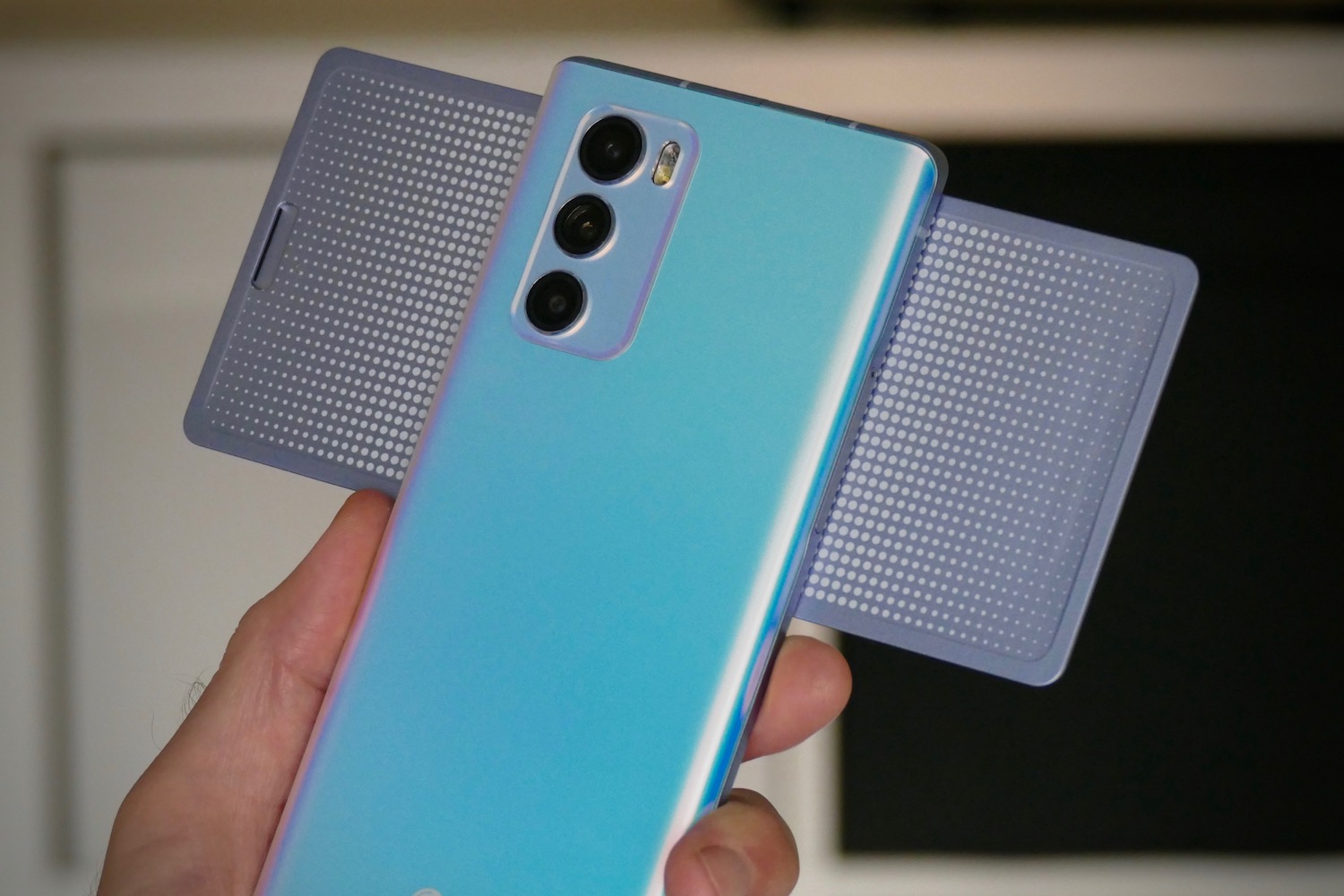
It’s odd to use at first, but the results look good and there’s plenty of fine-tuning available with the virtual joystick so you can pan really slowly for added drama in your shots. And the fact that you can hold the phone steady in “portrait” but with a landscape viewfinder and landscape video is a clear advantage over other phones.
There are several modes that adapt the system for horizontal panning shots, shots with physical movement, and extra smoothing when moving the camera normally. It’s very easy to use, although it takes a little time to understand how the modes work. I haven’t tested it out in the real world yet, but the creative opportunities are clear.
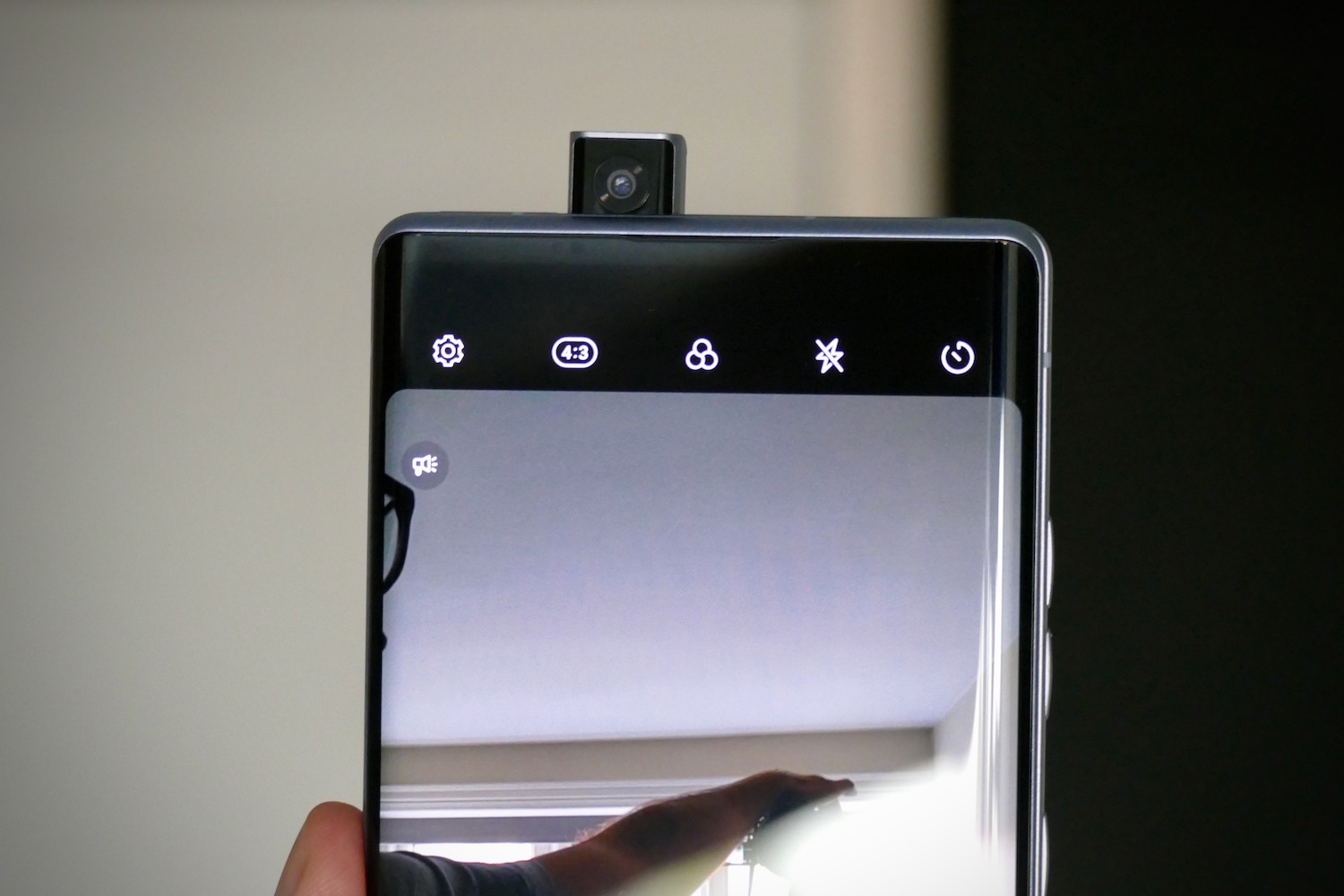
I also like the way the second screen shows photo editing tools with the photo itself on the main screen. Usually, I end up editing photos in portrait while zooming in on the image, so this alternative option works really well. Other camera modes include shooting with both the front and rear cameras at the same time. If you’re wondering where the 32MP wide-angle selfie camera is, it’s in a pop-up module on the main body.
Initial impressions
The LG Wing is about as intriguing as smartphones get. It’s unlike anything else you can buy today, and answers a modern ergonomic issue with our phones. Its success, or lack of, will come down to apps working correctly when you flick the screen round. If they don’t, or don’t offer tangible benefits, the feature won’t get used and you’ll be left with a fairly heavy, normal-looking smartphone.
Using the LG Wing for a few hours does make me want to use it more, but it also still feels like a work in progress, a cute concept that’s almost ready for prime time. Let’s see what happens to the Wing between now and release, and how the swivel screen works in day-to-day life. In the meantime, the LG Wing gets a big tick in the box marked, “Fun phones with masses of potential.”
Editors' Recommendations
- We’ve never seen a phone with a screen like this before
- Apple vs. Samsung: Who has the best lock screen customization in 2022?
- The best Samsung Galaxy Watch 4 screen protectors
- The best screen-time apps to get your digital life under control
- Android 12.1 hands-on shows a redesigned big-screen Android experience for foldables

